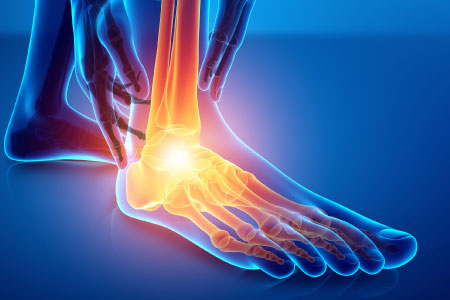This year has been a big one for bunionectomy coding, with two codes being added, six revised, and three deleted. Proper names for various procedures were removed, and “with or without sesamoidectomy” was changed to “sesamoidectomy, when performed” for clarification purposes. The fact that there even are this many bunionectomy codes highlights the variety of procedures performed, as well as the complexity of the foot structure.
When it comes to ankles, toes and feet, there are several bones, tendons, muscles and joints working together to ensure feet operate properly, as medical coders well know. Foot and ankle CPT® codes can seem as complex as the anatomical structures themselves. Without a thorough knowledge of anatomy, it will be difficult to decipher physicians’ reports, leading to further confusion and denied claims. Physicians and coders may have different understandings of medical terms, making it crucial to thoroughly understand all the names in the CPT® definitions, as well as different anatomical structures.
Clearing Up the Confusion
In order to distinguish between the different bunionectomy procedures, here are definitions of some often confused terms to help clarify the CPT® definitions:
- Bunion: A prominence over the first metatarsophalangeal joint. Bunions can be present on the bottom of the foot, on the top, or both.
- Hallux Valgus: A description of what can happen to the big toe because of a bunion, this is an actual deviation of the first metatarsal towards the second metatarsal. Starting at the metatarsophalangeal joint, the pull of the tendons gradually cause the metatarsal to drift farther.
- Hallux Rigidus: A painful disorder of the joint at the base of the big toe. As the name implies, the rigidity of the toe prevents it from moving.
Knowing definitions and understanding what doctors are referring to in their reports is key in successful podiatry coding. According to podiatrist Dr. Harry Goldsmith, one of the key issues with the way bunionectomy codes have been written is that “some professional coders reviewing claims look for ‘hallux valgus correction’ to match the CPT description while many foot and ankle specialists use the term ‘bunionectomy’ or ‘hallux abductovalgus correction.’ In order to reduce the confusion, it was decided to substitute ‘bunionectomy’ for ‘bunion’ in the parentheticals.”
Breaking Down the Codes
When coding for bunionectomy procedures, the first thing to look for is if the procedure was to correct a hallux valgus or a hallux rigidus. Codes 28291 (new) and 28289 (revised) are the only codes dealing with hallux rigidus, and deciding which to use isn’t too difficult. If an implant was inserted, the appropriate code is 28291, while 28289 would be used if no implant was involved.
The other new and revised codes all deal with a correction of hallux valgus, so for these an in-depth knowledge of anatomy coupled with an understanding of differences between procedures is crucial:
- 28295, 28296, and 28298 involve an osteotomy, and only one; 28295 involves a proximal metatarsal osteotomy, 28296 a distal metatarsal osteotomy, and 28298 a proximal phalanx osteotomy
- 28292 involves a resection of the proximal phalanx base
- 28297 involves a first metatarsal and medial cuneiform joint arthrodesis
Finally, if two osteotomy procedures were performed, code 28299 would be used. It’s crucial here to differentiate between when a surgeon performed a two-part osteotomy versus when he or she performed two osteotomy procedures.
Same Procedures, New Codes
While codes 28290, 28293 and 28294 were deleted, the procedures formerly falling under these codes were not. For Silver procedures formerly reported with 28290, now use 28292. For procedures involving implants inserted at the first metatarsophalangeal joint, use code 28291 instead of 28293. With this code – and any code involving implants – be sure to have documentation proving the medical necessity of the implant, as many insurance carriers may contest the medical necessity of certain joint implants often considered to be experimental.
Lastly, procedure 28294 was axed, and now Joplin procedures fall under code 28899 (Unlisted procedure, foot or toes). Take special care when using this code, as auditors may be weary of providers and coders taking advantage of the vague nature of the word “unlisted” and using it to seek reimbursement for new or experimental procedures. Be sure to provide documentation to the insurance carrier proving what the procedure was, as well as its medical necessity.
No Need to Tiptoe Around Coding Confusion
Bunionectomy coding has never been simple, but hopefully the revisions this year have made things more clear-cut for physicians and coders. Podiatry code changes for 2018 shouldn’t be as extensive, but if you’re still confused, join orthopedics coding specialist Margie Scalley Vaught as she discusses in detail bunionectomy codes, Haglunds and Achilles tendon repairs, and coding peroneal tendons. In her 60-minute webinar with ProfEdOnDemand, “Ankle and Feet Coding – Putting the Right Foot Forward,” Vaught breaks down complicated anatomy and enlightens coders, billers and office managers on how to apply CCI edits, getting providers to provide adequate documentation, and what documentation is key for the correct CPT® selection.




